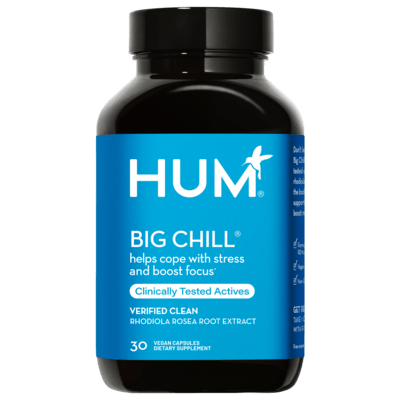Let it all out! Audibly expressing your emotions may have some merit (and no, you’re not just aggro.) Find out what you can learn from scream therapy.
When we think of screaming, lowering stress is hardly the first thing on our minds. Instead, we picture shouting matches between spouses, toddler tantrums, and stubbed toes. You probably associate shouting with an escalation of frustration, not a lessening of it. But you might be surprised to learn that screaming may, to some degree, help relieve your stress.
Sighing, certainly a much quieter option, may also act as a speedy stress soother.
Here’s more on screaming and sighing’s potential benefits and how to use them as part of your stress-reducing routine.
What is scream therapy?
Screaming (on purpose!) isn’t just a woo-woo way of expressing your feelings. Screaming your heart out or your head off is actually part of primal therapy, developed by Dr. Arthur Janov in the 1960s. Dr. Janov speculated that screaming—and other physical outlets like sobbing—could help release repressed childhood trauma. He called this trauma “primal pain,” and believed that screaming could help people recover from it.
At the time, primal therapy was fairly popular, thanks in large part to Dr. Janov’s celebrity clients, like John Lennon and Yoko Ono. Today, however, primal therapy is considered controversial with most therapists unconvinced of its effectiveness. Mostly, this is because primal therapy rejects all other forms of therapy. (Quick reminder: Methods like cognitive behavioral therapy are well-studied to provide benefits for a range of mental health conditions.)
Still, screaming itself can be helpful in conjunction with other mental health tools, mainly because of its cathartic effects.
“Letting loose of the pent-up emotion is freeing, like spitting poison out of your mouth,” says Ryan Howes, PhD, a clinical psychologist in Pasadena, CA, and author of Mental Health Journal for Men.
Screaming can be especially powerful if you tend to be tightly wound, stuff down your emotions, and smile through devastating pain.
But catharsis can only go so far, as it’s akin to slapping a band-aid over a deep wound, says Dr. Howes.
“With catharsis alone, we’ll just spend time periodically yelling in the car without addressing the circumstances that got us there.”
The key is to use screaming as a first step, following it up with introspection and action: exploring what underlies the pain and overwhelm and identifying promising solutions to try.
How screaming can help

Even though scream therapy won’t solve your problems, a hearty shout may bring relief on a physiological level.
Relief may reside in the “rush of endorphins and peptides produced by the pituitary gland and central nervous system, that act on the brain’s receptors to increase pleasure, reduce pain, and increase strength,” says Dr. Bryan Bruno, medical director at Mid City TMS, a New York City-based medical center focused on treating depression.
As you scream, Dr. Bruno notes, “your body becomes more alert, and you release tension in the muscles caused by bottled-up emotions.”
Speaking of emotions, screaming may help you connect to your emotions and understand their gravity.
Screaming (literally) gives voice to your emotions—transforming a feeling from something that’s silent and creating inner tension, to something that’s physically felt and heard, says Howes.
When an emotion is “screaming through your throat or echoing off the walls, it seems much more real,” he says. And that makes it harder to deny and dismiss, helping you start to process your emotional pain.
In some cases, screaming helps you realize just how upset you really are. “I’ve often heard people say that they didn’t even know they felt that angry until they heard the strength of their own scream,” says Howes.
What’s more, this can help you empathize with yourself, better understanding just how much you’ve been holding inside, he says.
Why sighing also soothes
By definition, sighing is twice the volume of a regular breath. Put simply, it’s a long, deep breath.
We naturally sigh every few minutes, which is critical for our lungs—and our lives. Sighing ensures that the alveoli, about 500 million tiny air sacs in the lungs, don’t collapse. Alveoli are responsible for oxygenating the blood and exchanging oxygen and carbon dioxide.
Australia-based psychotherapist Shagoon Maurya describes sighing as our body’s reset button.
And research bears this out. According to a 2012 review, sighing helps “to restore calm in the context of stress or emotional arousal, inducing a subjective sense of relief, and may therefore be functional as a mechanism to cope with stress and emotions.”
How to add screaming and sighing to your stress relief routine

There are many ways you can sigh and scream your way to less stress. Here’s a range of strategies to try, depending on what resonates with you.
Scream in safe spaces.
To avoid freaking out your family or next-door neighbors, consider screaming somewhere private.
According to Howes, you might yell:
- In the car
- While music is blaring
- Into a pillow
- In the wilderness
Feeling self-conscious about shouting? Howes suggests starting out with a moderate volume and then gradually cranking it up.
Use a scream box.
A scream box can serve as a kind of container for your big emotions. According to a piece on Moms.com:
“Metaphorically, it allows the user to scream their negative emotions into the box for the box to hold and contain rather than the person. The idea is that once these emotions are released from the person and into the box, the person can then breathe back in positive emotions.”
Scream boxes can also help to reduce some of your scream’s roar, so you’re not bothering—or scaring—others.
To make your scream box, simply:
- Find a narrow-ish box
- Cut a hole through the top (if it doesn’t already have one)
- Cover the box with blank paper
- Put in items that muffle sound, such as an old blanket or towel
- Decorate the box, so it feels most comforting
Sigh throughout the day.
Since sighing is a lot less disconcerting than screaming to the people around you, you can use it anywhere you like—your office, on the train, in line at the grocery store.
To get started, breathe in for a count of five through your mouth and then let out a sigh, says Maurya. But be sure not to overdo it. Excessive sighing may lead to hyperventilating.
When sighing intentionally, the key is to make sure it feels good.
Shake it out.
While screaming may help you unearth some serious emotions, you can also have fun with it. For example, shout while shaking your body—as in this “Tree Shake” exercise from Traditional Chinese Medicine. Maurya notes that according to this ancient practice, yelling is great for our lungs and liver.
Shout while you work out.
Exercise is an excellent way to ease stress. Research also shows that screaming or grunting can boost your power and performance as you move through your routine. For example, a 2021 study found that when college pitchers grunted, their overhead throwing velocity was higher than when they didn’t make a sound.
Performing lower impact activities or de-stressing with yoga? Consider sighing instead.
Add other tools.
Again, think of screaming as the first step in your stress-reducing routine. What other steps can you take to delve deeper and find more lasting relief?
You might journal, talk to a friend, or work with a therapist to identify why you’re so frustrated and what helpful actions you can take, says Howes.
5 Primal Scream Therapy FAQs
1. What is Primal Scream Therapy?
Primal Scream Therapy is a type of psychotherapy that encourages individuals to release repressed emotions through intense emotional expression, often involving screaming or vocalizing pain, in order to heal past traumas.
2. How does Primal Scream Therapy work?
The therapy focuses on accessing and expressing deep-seated emotional pain from early childhood, allowing the individual to confront and release repressed feelings, which can promote emotional and psychological healing.
3. Is Primal Scream Therapy effective?
For some people, Primal Scream Therapy can be highly effective in accessing and processing unresolved emotional trauma, but its effectiveness varies depending on the individual and their willingness to engage with the process.
4. Are there any risks associated with Primal Scream Therapy?
Potential risks include overwhelming emotional experiences or feeling vulnerable during the release of repressed emotions, which may require careful guidance from a trained therapist to ensure safety.
5. Who can benefit from Primal Scream Therapy?
Primal Scream Therapy can benefit individuals struggling with unresolved childhood trauma, emotional blockages, or those seeking a deeper emotional release, but it may not be suitable for everyone, especially those with certain mental health conditions.
The bottom line
Screaming and sighing won’t cure your stress. But they can help you release pent-up emotions, realize the gravity of what’s going on, and receive some physiological relief.
Use screaming and sighing as short-term strategies to reduce stress—and as catalysts to discover and implement more long-term solutions.











